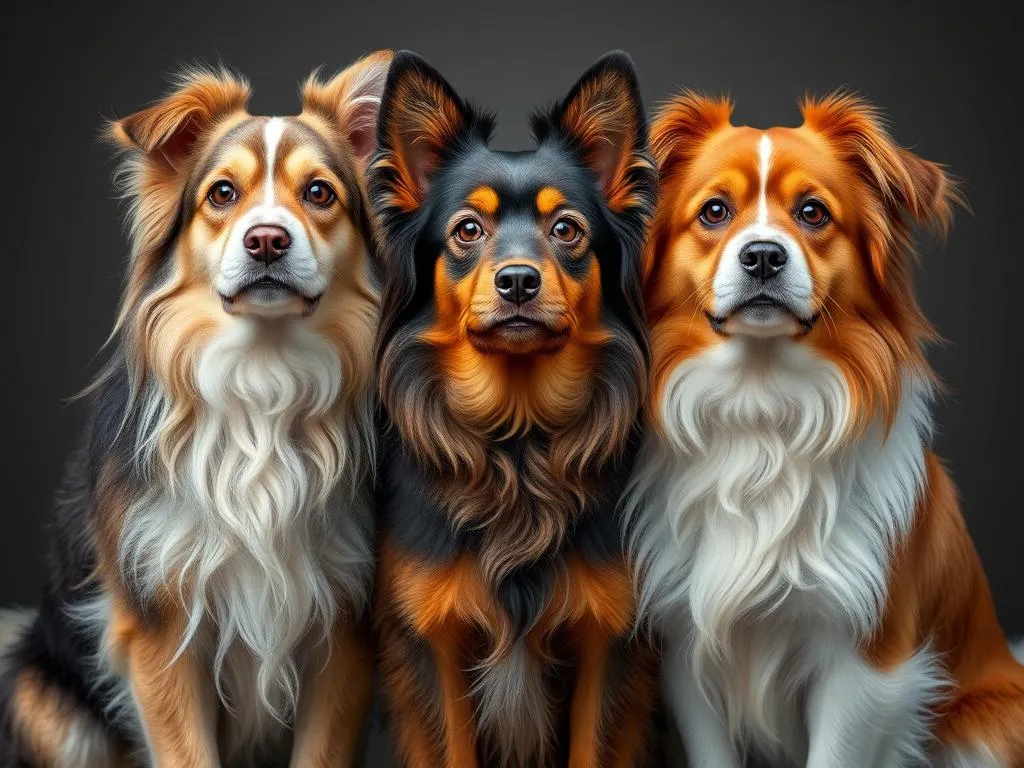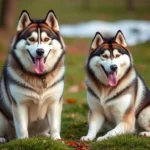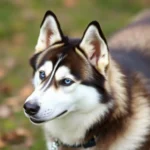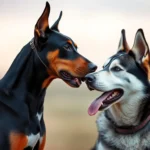
Introduction
Dog breeds with fluffy tails have an undeniable charm that often draws dog lovers to them. From the graceful swish of a tail to the playful wagging that signifies excitement, a dog’s tail can reveal a lot about its personality. Not only do these tails add to the aesthetic appeal of a dog, but they also serve various functions, including communication and balance. This article aims to inform readers about various dog breeds with fluffy tails, their unique traits, and considerations for potential owners. Whether you’re looking for a new furry companion or simply want to appreciate the beauty of these breeds, this guide is for you.
Understanding Fluffy Tails
Definition of Fluffy Tails
A fluffy tail is characterized by its thick, bushy appearance, often covered in a soft and dense coat of fur. Unlike sleek or thin tails, fluffy tails are typically more voluminous and can vary significantly in length and shape depending on the breed. For example, some breeds may have tails that curl over their backs, while others carry them low or at a neutral position.
Reasons for Fluffiness
The fluffiness of a dog’s tail is primarily attributed to genetic factors. Specific breeds have been selectively bred for their unique coat characteristics, including tail type. In many cases, the fluffy tail serves an evolutionary purpose—such as providing warmth in cold climates or aiding in balance during movement. Breeds known for their fluffy tails have often adapted to their environments, which has resulted in the diverse array of fluffy tails we see today.
Popular Dog Breeds with Fluffy Tails
Overview of Top Breeds
There are numerous breeds recognized for their fluffy tails, each with its own unique characteristics. Here’s a brief look at some of the most popular dog breeds with fluffy tails:
- Samoyed
- Alaskan Malamute
- Pomeranian
- Chow Chow
- Shetland Sheepdog
- American Eskimo Dog
Breeds in Detail
Samoyed
Originating from Siberia, the Samoyed is a friendly and gentle breed, known for its stunning white coat and fluffy tail that curls over its back. These dogs are incredibly sociable and thrive in family environments. Grooming is essential for Samoyeds due to their thick double coat; regular brushing helps reduce shedding and matting.
Alaskan Malamute
The Alaskan Malamute is a large, powerful breed originally bred for heavy hauling. Their fluffy tails are long and bushy, often carried high, which adds to their majestic appearance. This breed requires substantial exercise and enjoys outdoor activities. Their tails serve as a form of communication, expressing their emotions ranging from excitement to alertness.
Pomeranian
One of the smallest breeds on our list, the Pomeranian, is famous for its vivacious personality and fluffy double coat. Their tails are plume-like, often lying over their backs, and add to their adorable appearance. Pomeranians are highly adaptable and can thrive in various living situations, making them a popular choice for city dwellers.
Chow Chow
The Chow Chow is a unique breed known for its lion-like mane and distinctive blue-black tongue. Their fluffy tails are often carried in a sickle shape over their backs. Chow Chows can be aloof and require early socialization and training to ensure they develop a well-rounded temperament.
Shetland Sheepdog
The Shetland Sheepdog is a small to medium-sized breed that is both intelligent and energetic. Their fluffy tails are bushy and help them balance while herding. Known for their outstanding companionship, Shetland Sheepdogs are great with children and often excel in obedience training.
American Eskimo Dog
The American Eskimo Dog comes in three sizes: toy, miniature, and standard. All varieties display a fluffy tail that is carried high and often curls over the back. These dogs are known for their intelligence and agility, making them excellent candidates for training. Regular grooming is essential to maintain their fluffy appearance and overall health.
Grooming and Care for Fluffy-Tailed Breeds
Importance of Regular Grooming
Grooming plays a crucial role in maintaining the health and appearance of fluffy tails and coats. Regular grooming sessions help remove dirt, loose fur, and prevent matting, which can be especially troublesome in breeds with thick coats.
Grooming Tips
- Tools Needed: Invest in quality grooming tools, including a slicker brush, comb, and de-shedding tools to manage shedding effectively.
- Frequency: Depending on the breed, grooming should be done at least once a week, with more frequent sessions during shedding seasons.
- Bathing: Bathe your dog every few months or as needed, ensuring that you use dog-specific shampoos to maintain coat health.
Common Health Issues
Fluffy-tailed breeds can be prone to specific health issues, including:
- Matting: Regular grooming can help prevent matting, which can lead to skin infections.
- Ear Infections: Some fluffy breeds have ears that trap moisture, so regular ear cleaning is essential.
- Skin Conditions: Keep an eye out for any changes in your dog’s skin or coat, as these can indicate underlying health issues.
Training and Socialization
Importance of Early Training
Early training is crucial for all dog breeds, but it can be especially important for fluffy-tailed breeds, which may exhibit specific behavioral traits linked to their temperament. Proper training helps establish boundaries and encourages good behavior.
Socialization Tips
- Introducing to Other Pets: Gradually introduce your fluffy-tailed dog to other pets in a controlled environment, allowing them to interact positively.
- Exposure to Different Environments: Expose your dog to various settings, people, and sounds to help them become well-rounded and confident.
- Positive Reinforcement: Use treats and praise to reward good behavior during socialization and training sessions.
Common Training Challenges
Some fluffy-tailed breeds may face unique training challenges, such as stubbornness or a strong prey drive. Consistent, positive training methods are essential to overcoming these challenges. Enrolling in obedience classes can also provide additional support and structure.
Choosing the Right Fluffy-Tailed Breed for You
Assessing Lifestyle Compatibility
When considering a fluffy-tailed breed, it’s essential to assess your lifestyle and compatibility:
- Space: Ensure you have enough space for a larger breed or a suitable environment for a smaller one.
- Activity Level: Consider how much time you can dedicate to exercise, as some breeds require more physical activity than others.
- Family Dynamics: Evaluate how a dog would fit into your family, especially if you have young children or other pets.
Adoption vs. Buying
Both options have their pros and cons:
- Adoption: Often more affordable, and you can give a dog a second chance at a loving home.
- Buying: Allows you to have a specific breed with known lineage, but it often comes with higher costs.
Resources for Finding Breeders or Shelters
Finding reputable breeders or shelters is crucial. Look for organizations with good reviews and those that prioritize the health and well-being of their dogs. Visiting shelters can also provide opportunities to meet dogs in need of homes.
Conclusion
In conclusion, dog breeds with fluffy tails are not only visually appealing but also bring a wealth of joy and companionship to their owners. Understanding their unique characteristics, grooming needs, and training requirements is essential for anyone considering welcoming one of these beautiful breeds into their home. While the responsibilities of dog ownership are significant, the love and companionship that fluffy-tailed dogs offer make it all worthwhile. Whether you’re drawn to the loyal Samoyed or the playful Pomeranian, these breeds can enrich your life in countless ways.









